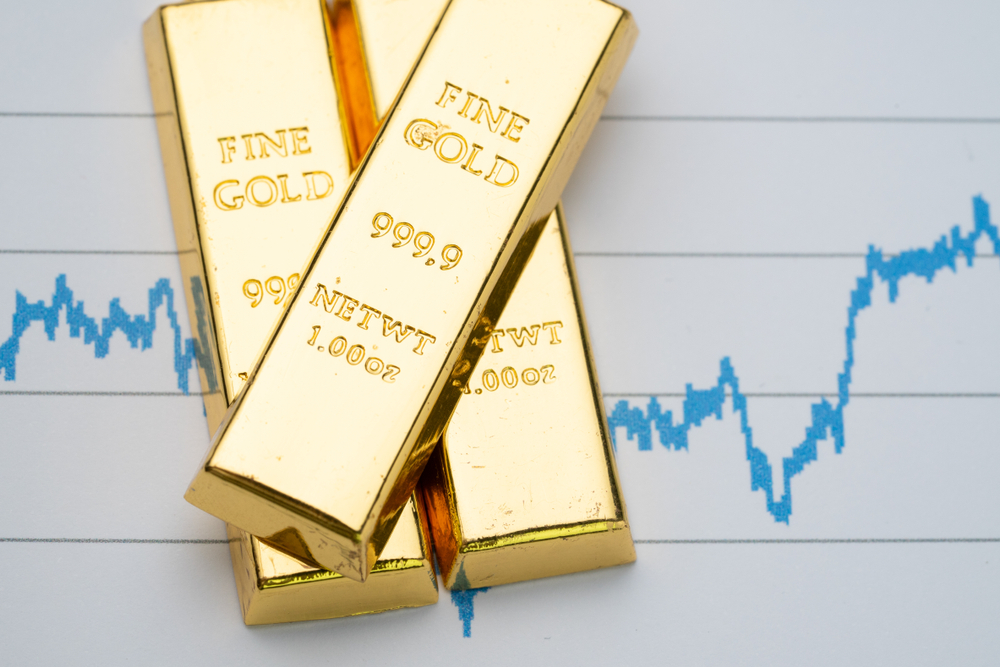Investors have piled into the gold exchange-traded commodities (ETCs) over the past month amid fears of Russia’s ongoing war in Ukraine and the US Treasury yield curve inverting, however, there is a risk the precious metal may have already hit its high this year.
Gold has made a comeback in the first quarter of 2022 as inflation continues to rise, while Russia’s invasion of Ukraine and an inverted yield curve pushes investors towards the safe haven.
However, despite its return to favour, some have questioned its credentials as an inflation hedge and have been left wondering — given the current macro environment — why we have not seen record level prices.
Nitesh Shah, head of commodities and macroeconomic research at WisdomTree, said a bearish outlook for gold would see prices depreciate further.
"In this scenario, the Fed is successful in driving inflation lower to target with an aggressive tightening policy that will see bond yields rise to 3.50%," he said.
"Assuming the Fed is more aggressive than other central banks, the US dollar will appreciate. An end to the Ukrainian conflict could also remove the geopolitical premium in gold, driving speculative positioning lower."
The commodity flirted with all-time highs earlier this month, hitting $2,062 per ounce on 8 March, before falling back to finish the month at $1,942, 1.7% up for the month, following a 6% rise in February.
This came as global net inflows into gold ETCs hit $11.8bn in March, the highest level of monthly inflows since 2016, according to data from the World Gold Council (WGC).
European ETPs recorded $5.3bn inflows in March, with UK-based ETPs accounting for 38% of all global inflows. The $16.4bn iShares Physical Gold ETC (IGLN) added $1.9bn alone in the week to 14 March while the $16.2bn Invesco Physical Gold ETC (SGLN) saw inflows of $911m.
Shah said the recent uptick could be a sign that gold is awaking from its slumber following a subdued COVID-19 recovery period in 2021, sparked by Russia’s war in Ukraine.
“For most of the past year, gold has been ignoring the red-hot inflation that we have been living in. Gold, when factoring in a US inflation rate of 7.9% in February 2022, should be trading at closer to $2,250 per ounce, rather than $1,971 where it is currently trading at 11 April,” Shah said.
“It is as if gold has been living in an alternate universe. It appears that gold has become less sensitive to inflation than predicted which means investors may have missed out.”
He added the precious metal still faced headwinds from rising 10-year US government bond yields – normally associated with negative bond moves – and an aggressive Federal Reserve rate hiking cycle, but said this will likely be offset by two-year bond yields rising at a sharper rate, driving a yield curve inversion, a key recession indicator, and pushing investors further into the safe-haven asset.
Athanasios Psarofagis, ETF analyst at Bloomberg Intelligence, said he expects flows to continue into gold ETPs duets the aforementioned macro factors.
“I expect flows to continue regardless of the performance. With inflation and Russia still on the forefront gold will certainly hold up. Its strongest case is its ability to remain uncorrelated to other assets, and that will continue to drive appeal,” he said.
Furthermore, the WGC anticipates gold ETF holdings could hit record highs this year after ending March 1.8% shy of the all-time month end-high recorded in October 2020.
Adam Perlaky, senior analyst at WGC, said: “We have seen fairly consistent, strategic demand for gold ETFs in 2022 but as the price of gold moves higher, we often see tactical investors move into gold via gold ETFs.
“It would not be surprising for gold ETF holdings to reach record highs should the price of gold remain at current levels or move higher.”
When adjusted for inflation, gold remains 37% below its all-time CPI-adjusted high of $3,141 set in 1980, suggesting there is more room for upside potential in the gold price should the current market dynamics continue.
Shah added: “Gold could potentially continue to rise if consensus economic forecasts are correct. Although, if gold’s sensitivity to inflation continues to weaken, we may see gold fail to meet these targets.
“If geopolitical events and the risk of curve inversion have helped gold return to our universe, the consensus scenario could be a good guide for the coming year.”
Related articles





